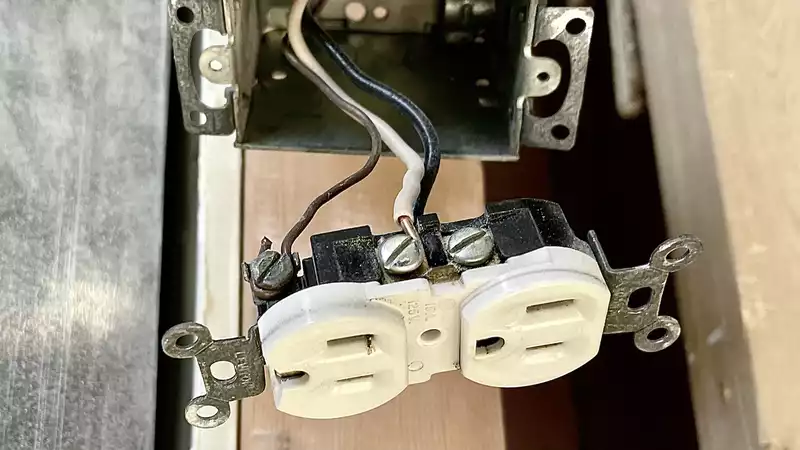Disclaimer: For questions about your home's circuits, consult a licensed electrician.
My spiral down the rabbit hole of DIY smart home rewiring began with a seemingly simple question: do you have neutral wires in your home?
The folks at Brilliant Smart Home Systems wanted to know if their eponymous smart control panel would work in my house. I knew about the electrical compatibility issues in my old house, but had no idea if my house had proper wiring before ordering the new smart switch.
In terms of home power flow, neutral wires provide an essential current return path for most modern U.S. electrical cords. Combined with the power and ground wires, it constitutes a modern lighting switch, but earlier switches operate without a neutral. So if you are designing a smart home, not having a neutral wire at the switch location can be a headache. Or, if you are like me, you don't know if there is a neutral wire.
Most homes built after the 1980s have neutral wires throughout the space. However, my house was built in the mid-1980s, so the wiring situation behind the walls could have gone either way. To answer Brilliant's question and to find out if my decision to use smart switches instead of smart lights had backfired, we tore down the drywall.
We witnessed a wiring mess that could only be described as a kindergarten art project. A few yards of tangled white wire, which we were sure meant a neutral wire running to a switch in the kitchen, still had us consulting with an electrician to come up with a rewiring plan based on the devices needed for our soon-to-be 21st-century smart home.
According to my Wiring 101 course (a day of shadowing an electrician), it wasn't the end of the world without a neutral wire on the switch. But if you are interested in a smart home device (not an outlet) that draws power directly from the electrical network, you need to know a) if you have it and b) if you have the devices you need.
The easiest way to determine if the switch has a neutral wire is to know when the house was built or last underwent a major renovation: if it was built after 1990, there is likely a neutral wire running throughout the house; if it was built before 1980, there is likely a smart switch most likely does not have the necessary neutral wiring.
If your house was built in the 1980s, things become less certain: the 1980s was not only the era of hairstyles and John Hughes movies, but also a transitional period for electrical standards. A 1985 New York Times article titled "Home Improvement" is very telling of the changes associated with the new building codes.
To see if there is a neutral wire, you can open the switch box in your house (or have an electrician come over) if you know how to do it safely. If there is a white wire coming out of the gang box, there is a good chance there is a neutral wire.
If there is no neutral wire in the switch box, you have two options. First, have an electrician install it. Our electrician insisted that it is not a difficult task, but they will need to get behind your wall. Since we opened up the house for renovations, running a neutral wire for the equipment I wanted would have been no problem.
The alternative to not dismantling is to use one of the best smart light bulbs or a smart switch that works without a neutral wire. Until a few years ago, not many companies addressed the wiring discrepancies in older homes. But now there are quite a few models available that can make spaces smart without neutral wires.
Some of the best smart switches still require a neutral wire to complete a given circuit and keep it powered 24/7. For example, the Brilliant smart home controller requires constant power to serve as a wall-mounted display that manages a collection of connected devices. In addition, a neutral wire provides individual dimming capability for the controller's switches.
In addition to smart switches that require neutral wires, some brands are trying to offer more comprehensive options for older homes; Cync (formerly C by GE) last year developed a three-wire switch that works without a neutral wire, increasing the IQ of the home and the electrical It was a good choice for those wishing to limit the amount of construction work required.
Rootron's Caseta wireless wall-mounted dimmer is another switch option for homes built in the pre-neutral wire era. However, to use the voice control feature with Alexa or Google Assistant (see why I chose Alexa over Google Assistant here), you need to set up a separate Rootron bridge connected to your router, like the Philips Hue lights.
Be sure to read the fine print before purchasing a smart switch. If you are a DIY installer, as I am, review the installation instructions available from the retailer or product website beforehand. The team at Brilliant has reconfirmed compatibility for my home.
Join me in solving the smart home DIY puzzle and have fun. Stay tuned for the next installment in this series. Until then, please email me at [email protected] or write in the comments section below with any how-to's, buying decisions, or anything else you'd like me to cover. Be sure to also check out my guide to the best smart home devices (and the best inexpensive smart home devices).
.









Comments